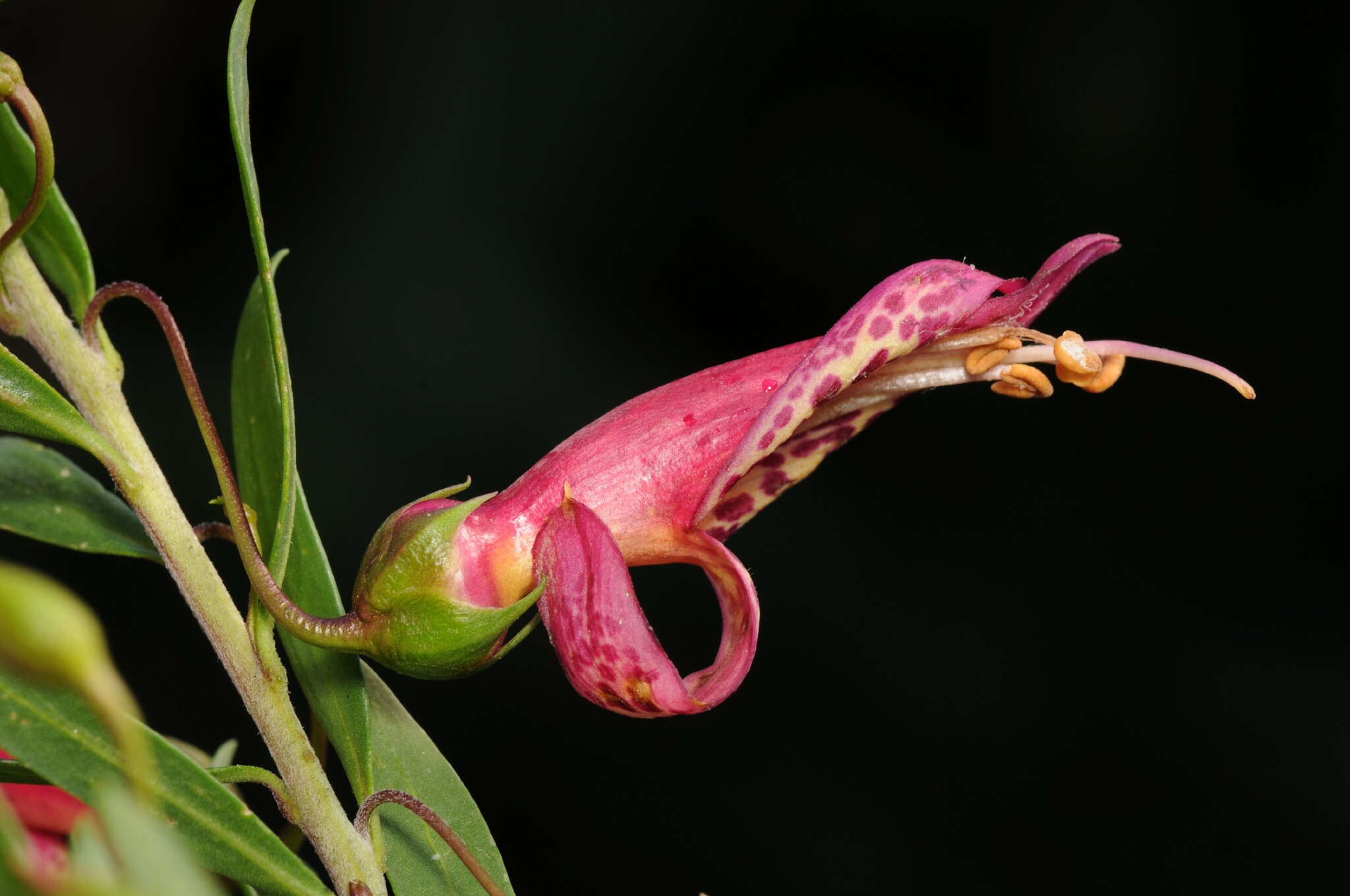
Trees, shrubs and herbs, occasionally climbers, sometimes aquatic or parasitic. Leaves alternate or opposite, occasionally whorled or clustered, mostly deciduous (evergreen in Hebe), simple or cut; stipules absent or seldom present. Flowers often irregular, bisexual or sometimes functionally dioecious, solitary or in clusters. Calyx usually 4- or 5-lobed. Corolla of united petals, mostly 5-lobed and 2-lipped, sometimes with a basal spur. Stamens 5, 4 or 2 (the 5th stamen sometimes represented by a staminode), fused to the petals; anthers 2-locular, usually confluent and dehiscing by a single distal slit oriented at right angles to the filament or more or less U-shaped. Ovary superior or half-inferior, with a nectar-secreting disk consisting of 2 fused carpels, and 2 chambers, numerous ovules with axile placentation, occasionally free-central or parietal. Fruit usually a septicidal capsule, drupe, or schizocarp of achenes or drupelets, calyx usually persisting in fruit.
Previously a much larger family, but many genera now dispersed to the Calceolariaceae, Linderniaceae, Orobanchaceae, Paulowniaceae, Phrymaceae, Plantaginaceae (many of the genera) and Stilbaceae. The family now includes Buddlejaceae and Myoporaceae. This treatment follows Stevens, P.F. (2018, Angiosperm Phylogeny Website).
Rarely cultivated species include the following. Scrophularia nodosa L., Figwort, from Europe is a perennial herb to 0.5 m or so; it has numerous green flowers with purplish brown upper lips in branched terminal clusters and is naturalised in damp or shady places in NSW. Sutera cordata Kuntze 'Snowflake' is a phlox-like, white-flowered South African woody perennial. [Bacopa 'Snowflake'] 'Mauve Mist' PVJ 9(4)56 is also available.
Some drugs, especially digitalin, are extracted from Digitalis and medicinal compounds are also extracted from some Euphrasia.
Often irregular flowers with fused petals; stamens fused to petals; ovary superior, of 2 carpels.
About 59 genera and 1800 species, cosmopolitan; c. 17 genera and c. 270 species in Australia,
Armstrong (1985).
Source: (2002). Scrophulariaceae. In: . Horticultural Flora of South-eastern Australia. Volume 4. Flowering plants. Dicotyledons. Part 3. The identification of garden and cultivated plants. University of New South Wales Press.
Updated by: Val Stajsic, April 2018
